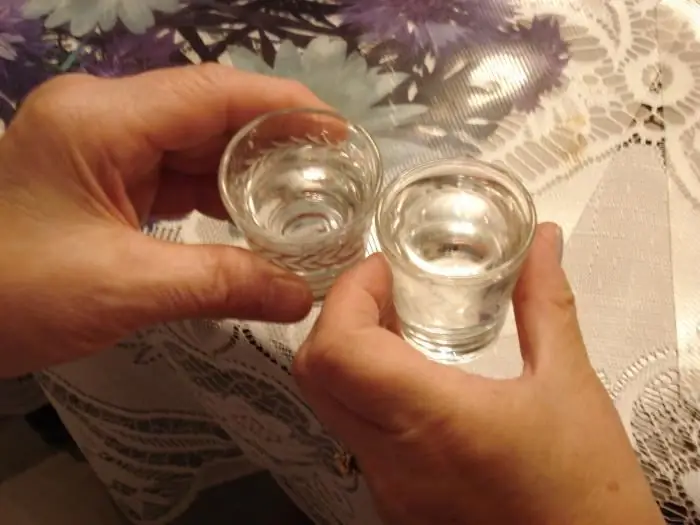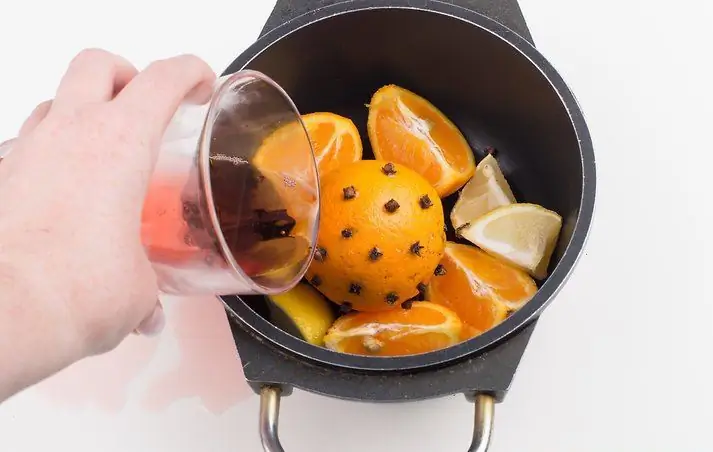2025 Author: Isabella Gilson | [email protected]. Last modified: 2025-01-23 12:50:30
Wine "Murfatlar" is produced in Romania in the region of the same name. Few people know that this country in 2005 ranked 12th in terms of wine production in the world. And the Murfatlar region, located on the Black Sea coast, is one of the best in Romania.

At a Glance
Romanian winemaking has a very rich and long history, just like many Eastern European countries. Before the introduction of classic Western European varieties in the eighteenth century, local grapes such as Zghihara de Husi, Cramposia de Dragasani and Galbena de Odobesti were mainly cultivated here. Now imported varieties form the basis of Romanian winemaking.
In this country, the climate is ideal for creating wine masterpieces. Everything is beautiful here: the ratio of sunny days to rainy days, and the soil under the vineyards.

If you have a desire to try wine from Murfatlar, then you should pay attention to positions such as chardonnay,Pinot Gris, Riesling, Cabernet Sauvignon and Pinot Noir.

They are all great. By the way, some people for some reason consider Murfatlar wine to be Hungarian. This is not true. This region is in Romania, and therefore the wine is also Romanian.
SC MURFATLAR ROMANIA SA
This company is currently the largest winery in Romania. The company owns four thousand hectares of vineyards and a modern winery in the southeastern part of the country on the Dobruja plateau, which is located between the Danube and the Black Sea.
Romanian wine "Murfatlar" is made exclusively from its own grapes. Production volume - forty-two million liters per year of bottled wine.

The company's vineyards are awarded the "DOC" category, which means "controlled by origin", that is, wines with this name originated from a specific area in which only certain grape varieties grow. These points are controlled by a special government agency (ONDOV). Only a product from this territory can bear the name "Murfatlar" wine, its photo is below. All other drinks either have a double name, or outright fake.

Wine zone
Murfatlar is located in the southeast of the country, in the Dobruja region, as mentioned above. This area is located between the Danube and the Black Sea coast. The climate heretemperate continental. It is positively influenced by the proximity of the Danube River, as well as the Black Sea. Wavy relief with gentle slopes also has a positive effect on the vines. Vineyards are located at an altitude of 90-110 meters above sea level. The soils are also very suitable - limestone black soil, it has excellent permeability and moderate humus content.
There are many sunny days, which contributes to the proper ripening of berries. The growing season depends on the variety and lasts from 195 to 210 days. In order to get sweet or semi-sweet wines, the crop is harvested late: in October-November.
The famous Romanian wines "Cotnari" and "Murfatlar" are most often made from raisined grapes.

How Murfatlar appeared
This vineyard has been known for thousands of years. The Thracians planted noble berries here, and then the ancient Greeks in the 4th-5th century BC.
To this day, there are many cities near the sea in Romania whose names clearly have Greek roots: Tomis, Callatis, Istria, Enisala and many others.
Archaeological excavations often take place in the area of these cities, and they prove that winemaking was practiced here in that ancient time.
In 106 A. D. e. this area was captured by the Romans (then it was called the state of the Dacians) and was part of the great Empire until 271. The new settlers made a great contribution to the development of winemaking. They brought with them new varieties of vines and taught various methods of makingdrink.
Now near the vineyard "Murfatlar" opened a museum of the history of winemaking. There are many exhibits there that confirm that wine was produced in this area before the Greeks, and during them, and during the Romans.
Name history
The word "murfatlar" has ancient Turkish roots and comes from "murvet", which means "rich or kind person". Over time, the word changed and began to sound like "murfat", and the name "murfatlar" appeared from it.
Excellent winemakers have always worked in these territories, regardless of who dominated the lands at that moment.
Murfatlar in the 20th century
After the phylloxera invasion, which affected almost all continents, the restoration of vineyards began in 1907. It was then that the "Experimental Murfatlar Vineyard" was planted. Then, about ten hectares of land were given under it and vines brought from France were planted there. These were varieties such as Pinot Gris, Pinot Noir, Chardonnay and some others.
In 1913-1916, two natives of Romania, who completed their studies in France in Champagne, opened the production of sparkling wine here. It was called "Tears of Ovid". But the experience was not very successful, since in this region it is better to grow late-harvest grapes and make sweet and liqueur wines from them. That is why in 1927 new grape varieties appeared here, such as Muscat, Sauvignon, Riesling,Traminer, Merlot and Cabernet Sauvignon. In 1939, wines from Murfatlar are served at the court of King Carol II of Romania.

Now the vineyard has again been awarded the title of "Supplier of His Royal Majesty's Court", as there is a monarch in this country to this day.
In 1954, the vineyards in this region were nationalized to create a state enterprise. At that time, their area was two thousand one hundred hectares. Then a lot of Murfatlar wine went to the market of Russia and other republics of the Union. At the moment, SC MURFATLAR ROMANIA SA continues to be the largest manufacturer in Romania.
Wine "Murfatlar" in our time
At the international exhibition in Italy in Verona, which was held in 2014, drinks from the Murfatlar vineyards were awarded the prestigious award - "Best Producer of the Year". At that time, only three European manufacturers received this award. Wines "Murfatlar" for the last fifty years have received more than two hundred medals.
Variety of wines from famous vineyards
First of all, "Murfatlar" wines became known as natural semi-sweet and sweet ones, which are made from raisined grapes, but now dry wines from these territories have begun to gain popularity. Moreover, they were appreciated not only by ordinary consumers, but also by specialists from European countries.
Recommended:
What is the difference between a wine drink and wine? Carbonated wine drink

How is a wine drink different from a traditional wine? This question interests many people. That is why we decided to answer it in the presented article
Bread wine. What is the difference between vodka and bread wine? Bread wine at home

For many modern Russians, and even more so for foreigners, the word "polugar" means nothing. That is why some take the name of this revived drink as a marketing ploy, because every six months some new strong alcoholic drinks appear on the shelves
How to make mulled wine at home? Spices for mulled wine. Which wine is best for mulled wine

Mulled wine is an alcoholic warming drink. It is served in winter in all reputable establishments. But to enjoy this drink, it is not necessary to go to a restaurant. You can easily cook it yourself. How to cook mulled wine at home will be discussed in detail in the article
Wines for mulled wine. What kind of wine is needed for mulled wine?

As for the base - wine for mulled wine, the classic version is red, made from dessert and table grapes. For the fortress, an intoxicant is added: suitable liqueurs, cognacs, rum. However, you can't go overboard with them. After all, the task of the drink is to pleasantly relax a person, fill the body with warmth, cheer up, improve well-being
Sediment in wine - is it good or bad? How to choose a good wine? natural wine

Wine is a product obtained from the fermentation of ordinary grape juice. So say winemakers and oenologists. Historians consider it one of the oldest drinks in the history of mankind. The ability to make wine is one of the first acquisitions of the ancients. When the juice extracted from grapes fermented in a jug many thousands of years ago, this was the beginning of the era of winemaking

